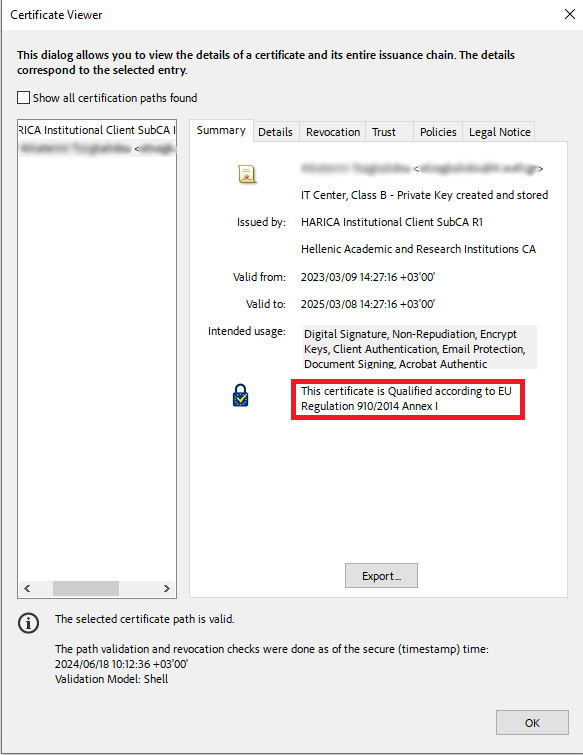Instructions for checking the validity of a digitally signed pdf document
The following instructions describe the procedure for verifying the validity of an electronic signature on pdf documents as required by the European Regulation 910/2014 (also known as eIDAS).
1. Validity check via website
Visit HARICA’s DSS Demonstration WebApp, a website based on European Commission’s DSS Demonstration WebApp and upload the digitally signed document to check the validity of the signature.
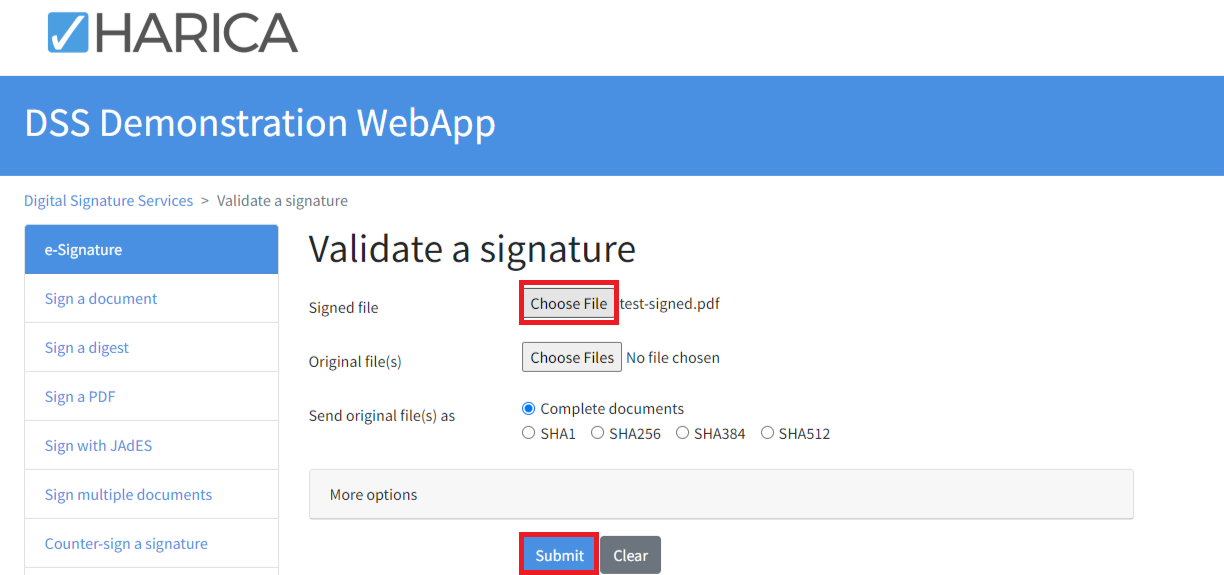
If the document is signed with a Qualified eSignature, the following information will be displayed:
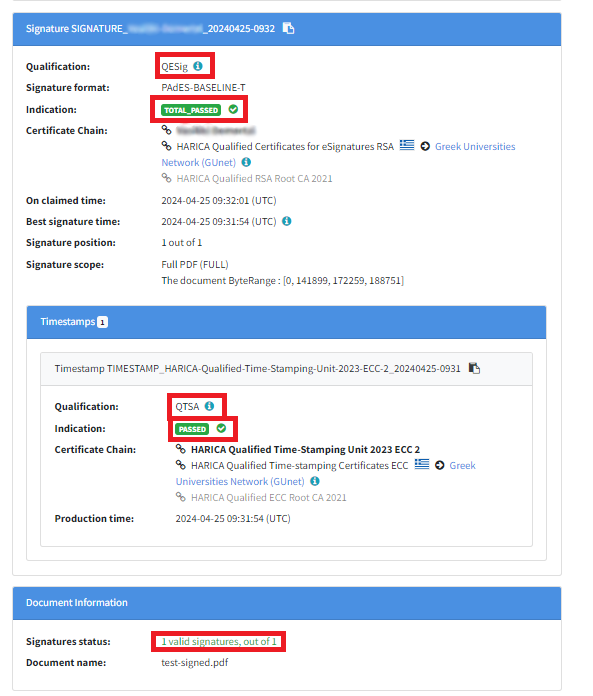
Each section contains information about the certificate used during the signing process. The information provided are further explained in more detail below.
-
Qualification: The QESig (Qualified Electronic Signature) verifies that the signature is a Qualified eSignature.
-
Indication: TOTAL PASSED confirms that the signature has been verified and has successfully passed all the necessary checks. This means that the signature is valid and meets all the criteria.
-
Certificate Chain: Personal information of the natural person who has signed the document are displayed. In addition, information about the list of certificates that make up the certificate chain from the certificate issuing authority (Root CA) to the signer's certificate is provided. The presence of all required certificates in the chain ensures the validity and reliability of the signature.
-
Timestamps: Information about the timestamp.
-
Qualification: The QTSA (Qualified Timestamp) verifies that the timestamp is qualified.
-
Indication: PASSED indicates that the verification checks for the timestamp have been successfully passed and the timestamp is valid and trusted.
-
Signature status (1 out of 1): The validity of the signature on the document is verified.
If the document is signed with an Advanced eSignature, the following information will be displayed:
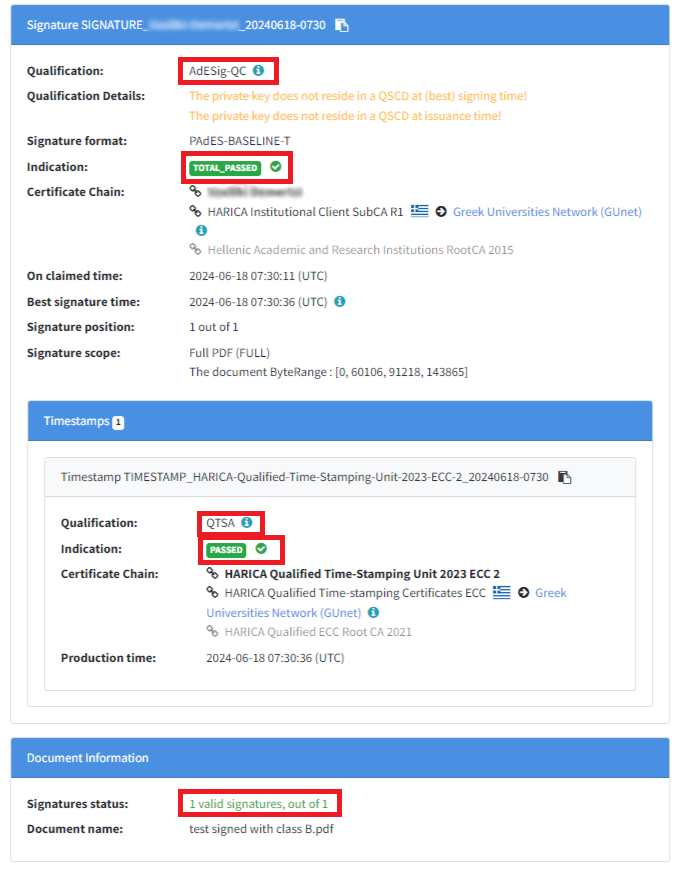
Similar information is obtained in this case as well. The differences are described in detail below.
-
Qualification: The AdESig-QC (Advanced Electronic Signature supported by a Qualified Certificate) verifies that the signature is an Advanced eSignature supported by a Qualified Certificate.
-
Qualification Details:
1.The private key does not reside in a QSCD at (best) signing time!: This indicates that at the best estimate of the signing time, the private key used to generate the signature was not located in a Qualified Signature Creation Device.2.The private key does not reside in a QSCD at issuance time!: This indicates that even when the certificate was issued, the private key was not in a Qualified Signature Creation Device.
2. Validity check via Adobe Acrobat Reader
Alternatively, use Adobe Acrobat Reader to verify the validity of the electronic signature.
CAUTION! Adobe Acrobat Reader is not a completely reliable tool for checking the validity of electronic signatures.
When you open a digitally signed document using Adobe Acrobat Reader, the Signed and all signatures are valid checkmark should appear to ensure that the signature is valid and that the document has not been modified after signing. Click on the signature to see more information.
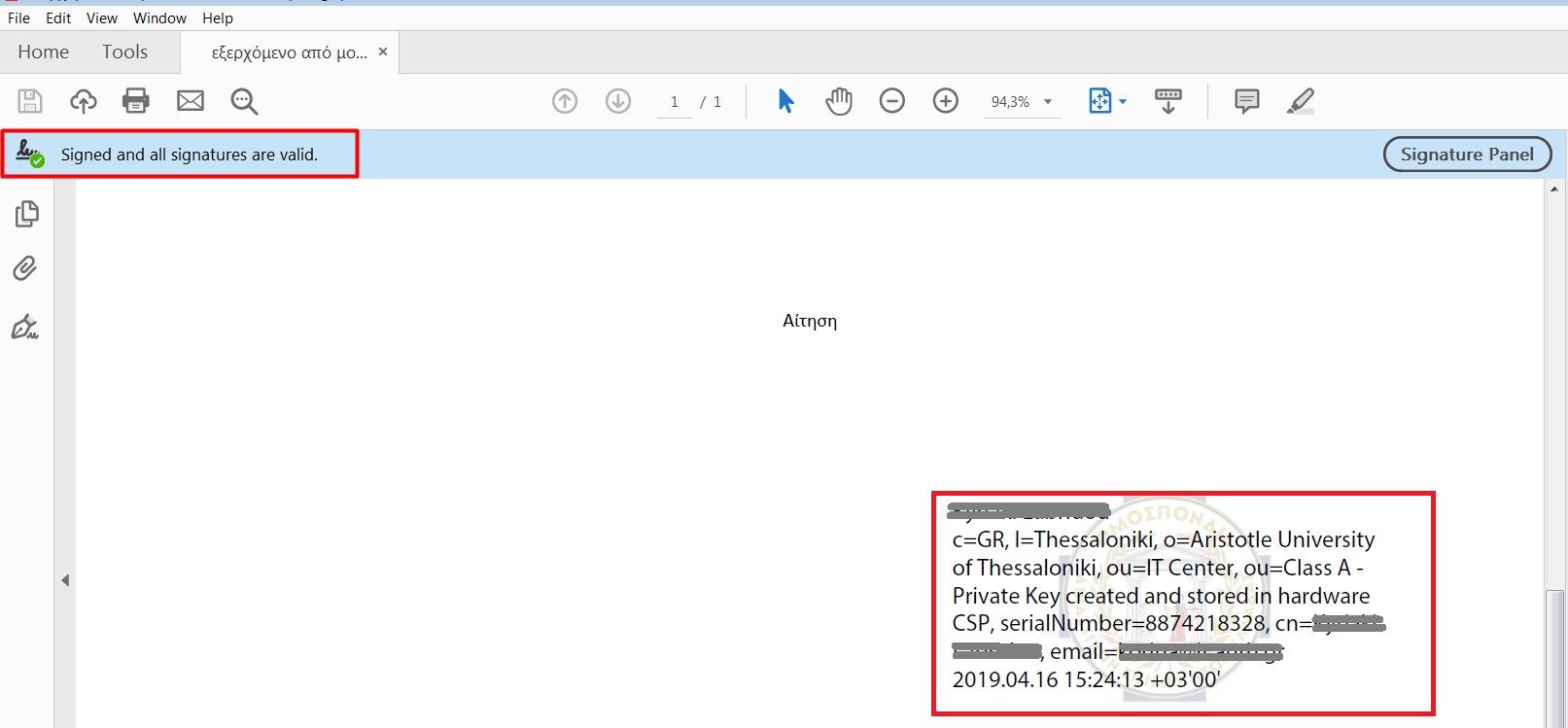
Select Signature properties.
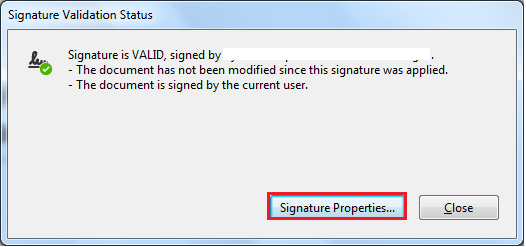
Check that all the information displayed is valid and has been validated by Adobe Acrobat Reader.
If the document is signed with a Qualified eSignature, there should be a ribbon (lock with the eIDAS logo) and a text next to it that says "This is a Qualified Electronic Signature according to EU Regulation 910/2014 ".
It is important that the signature date is derived from an embedded timestamp server.
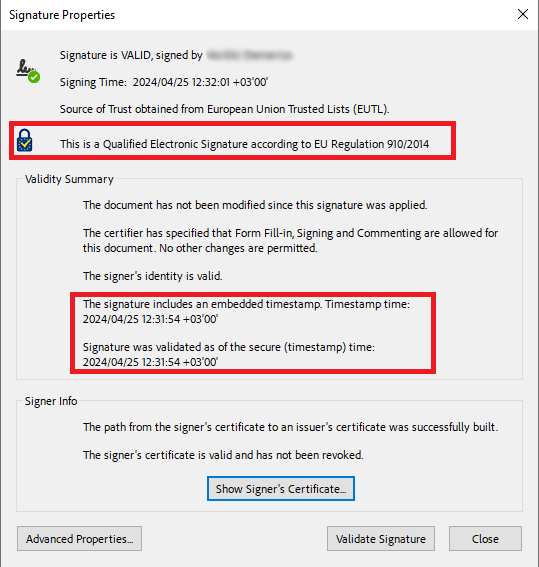
If the document is signed with an Advanced eSignature, then the ribbon (lock with the eIDAS logo) will be absent. To further check the type of the certificate, click Show Signer's Certificate.
It is important that the signature date is derived from an embedded timestamp server.
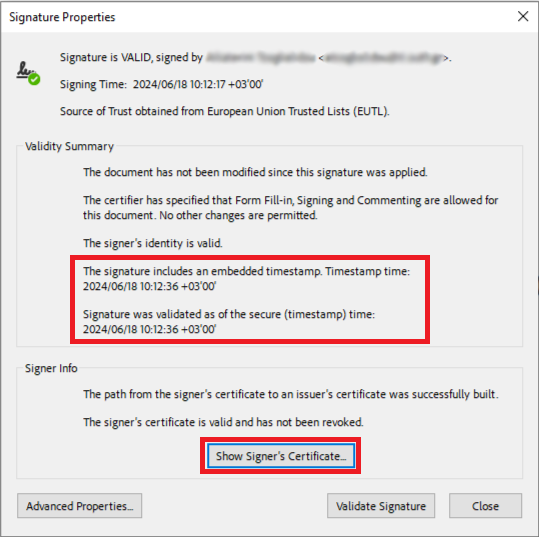
The ribbon (lock with the eIDAS logo) and a text next to it that says "This certificate is Qualified according to EU Regulation 910/2014 ANNEX I" is an indication that the document is signed with an Advanced eSignatute supported by a Qualified Certificate.
